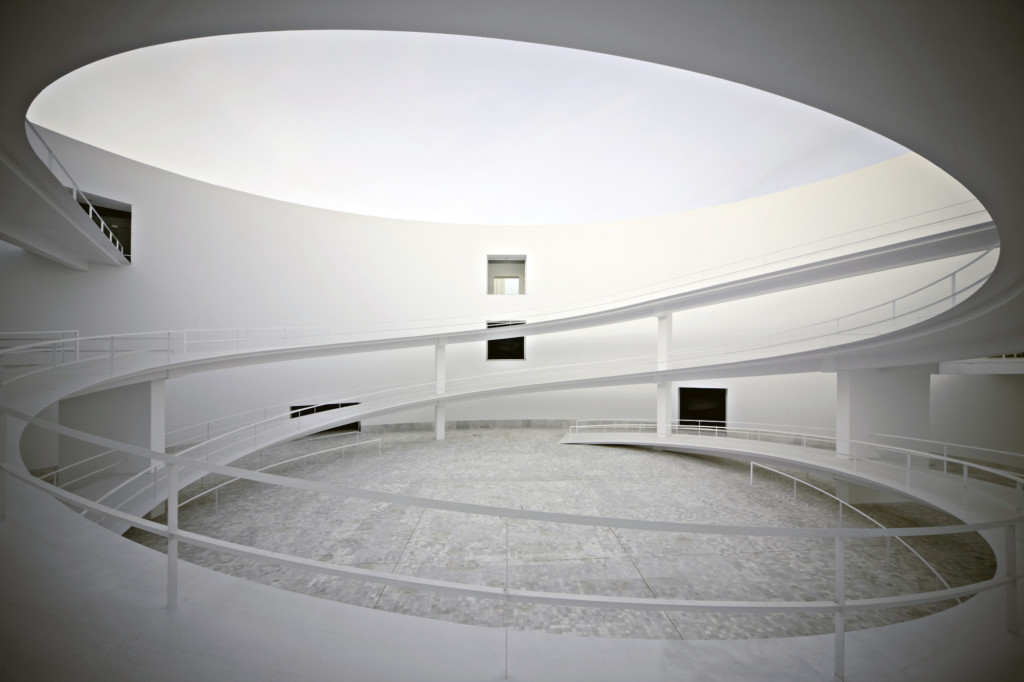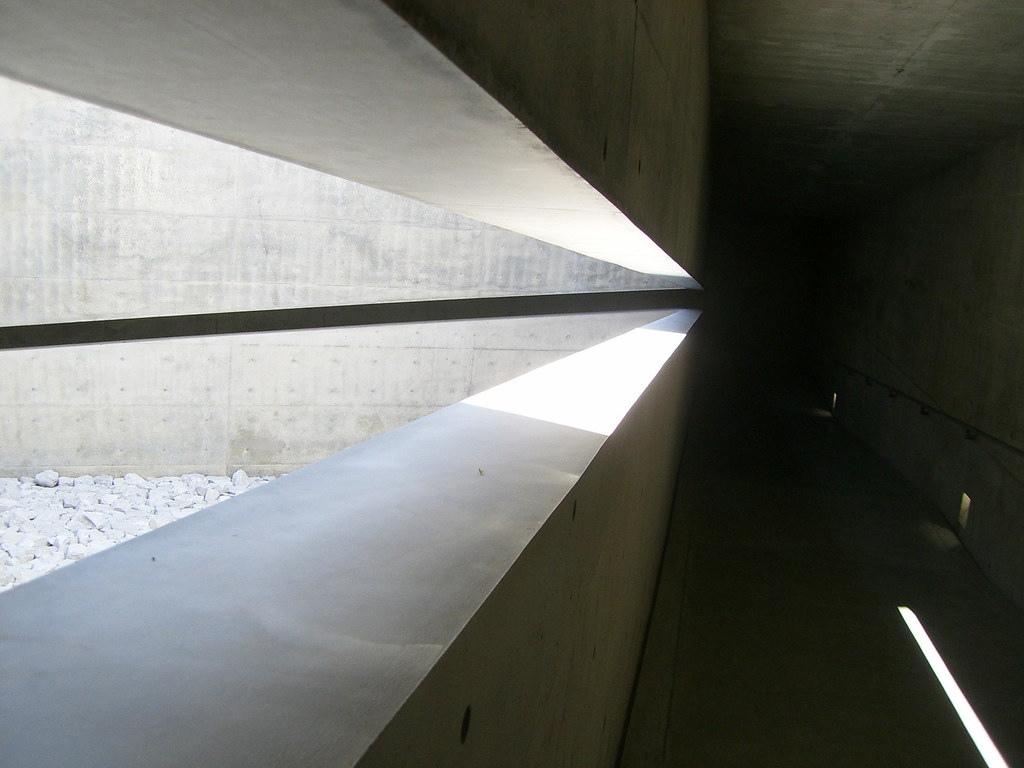14 November 2023
The Daylight Revolution: redefining Architecture Through Lighting
Alberto Campos Baeza, the renowned Spanish architect, once wrote that light, like gravity, is an unavoidable aspect of architecture [1]. According to him, every architect, as he does with the tape measure, spirit-level and plumb line, should carry a compass, and a photometer. The compass is necessary to measure the quality of the light by knowing the position of the sun, and the photometer to measure the quantity of light.
Both instruments can be found in a lighting studio or a research laboratory. However, it would be adventurous to claim that every architect is equipped with these tools, especially the photometer, as they are not mentioned in the list of essential tools and materials required by the school of architecture. Despite daylight’s prolonged existence in architecture and centuries of examination, there is still much to learn.

The history of architecture can be interpreted through its relationship with natural light. The first megalithic structures, such as Stonehenge or the pre-Columbian pyramids, demonstrate the significant role of the “sun god” and astronomical expertise of their constructors. The magnificence of Gothic cathedrals is in their light-supported structures that soar towards the heavens; the poetic dance of light and shadow in Tadao Ando’s or Barragán’s work, and even the most innovative proposals of Piano or Foster, are examples of this undeniable connection.
Daylight has always been a constant feature in architecture, but the reasons behind its use have evolved over time. At times, daylight has been incorporated into buildings for its symbolic significance. Nevertheless, it has also served as the central aspect of an individual’s interaction with the structure. Perhaps it is the manifestation of the Modern Movement and the Bauhaus school which illuminates the significance of light with a new interpretation: the reduction of shapes and the utilization of fresh materials emphasize the significance of this contemporary component, the most ubiquitous, in the conceptualization of architectural expanse. For Bruno Zevi, the modern language of architecture requires that each window should result from the space it needs to illuminate, and its perceived value depends on light [2]. Therefore, it is essential to plan space and volume in advance.
The 20th century saw the advent of electric light, a permanent and customizable light source. This replaced the dependence on daylighting to the degree that it was no longer viewed as necessary. In the 1990s, the energy crisis prompted a reassessment of natural light. However, as highlighted by Reinhart, daylighting design has often been regarded as a mere replacement for electric lighting, without sufficient attention being paid to the comfort of building occupants [3].
Light is essential for vision and enables us to perceive our environment. Moreover, it has a direct impact on our psychological and physiological well-being. It is therefore crucial to thoroughly understand its effects on humans.
The discovery of a third photoreceptor (photosensitive ganglion cells or ipRGCs) in the mammalian retina at the start of the century, followed by the elucidation of circadian synchronization processes in response to light, has led to increased interest in dynamic lighting solutions that prioritize people’s well-being. The risks associated with “blue light” exposure are also a growing concern. Thus, light is now seen as a crucial component of human health and well-being.
Light is the primary regulator of circadian rhythms whose impact depends on the spectral qualities of the light source, along with its intensity, duration, and exposure schedule. Living beings have evolved under the effects of natural light, and their biological rhythms respond to the light and dark periods that have governed them for millions of years.
Extensive research has been conducted on light and its impact on human health over the past two decades. New evidence has emerged to comprehend the relationship between phototransduction processes and human physiology. However, it is still unclear as to the complexities involved in this process and the fact that we are only in the preliminary stages of understanding it [4].
“Architecture and lighting design should go back to its origins, where to think about light is to think about architecture, where the role of the architect is centered on the conception of the human habitat and where daylight plays a fundamental role in the well-being of its occupants.”
From an architectural perspective, it can be argued that currently, we inhabit spaces that are insufficiently lit during the day and excessively lit at night. Hence, it is imperative to devise new definitions for lighting design and the notion of quality lighting. Employing daylight as an architectural tool constitutes a crucial aspect of architectural practice. Ensuring adequate exposure to sunlight is not only essential but also a basic human right.
It is crucial to recognize the importance of natural light as the primary lighting source and use artificial sources as supplementary, rather than the main lighting design purpose. The design of windows and facades plays a crucial role in “naturalizing” lighting design. Moreover, it is imperative for architects to comprehend the significance of daylighting and adopt a people-focused design approach.
Several studies have shown that there is a preference among individuals for natural lighting [5]. Additionally, high levels of diffused light contribute towards creating more enjoyable and stimulating environments. On the other hand, it remains unproven whether the advantages linked with sufficient sunlight exposure can be replicated artificially.
Architecture and lighting design should go back to its origins, where to think about light is to think about architecture, where the role of the architect is centered on the conception of the human habitat and where daylight plays a fundamental role in the well-being of its occupants.
This text was originally published in Spanish in Arquine on 18 March 2021 (electronic version available at: https://arquine.com/luz-natural-salud-y-arquitectura/).
References:
- Campo Baeza, A. (2017) The built idea. Oscar Riera Ojeda Publishers.
- Zevi, B. (1978). The modern language of architecture. Australian National University Press.
- Reinhart, C. (2020) Daylighting handbook. Volume I. Building Technology Press.
- Münch, M., Wirz-Justice, A., Brown, S. A., Kantermann, T., Martiny, K., Stefani, O., … & Skene, D. J. (2020). The role of daylight for humans: gaps in current knowledge. Clocks & sleep, 2(1), 61-85.
- Knoop, M., Stefani, O., Bueno, B., Matusiak, B., Hobday, R., Wirz-Justice, A., … & Norton, B. (2020). Daylight: What makes the difference? Lighting Research & Technology, 52(3), 423-442.



I am happy I found this! And I believe you’ll love Shadowmap. Sunlight is built into our DNA and we thrive to reconnect humanity with the Sun. You probably want to have a look at studio.shadowmap.org our newest product.